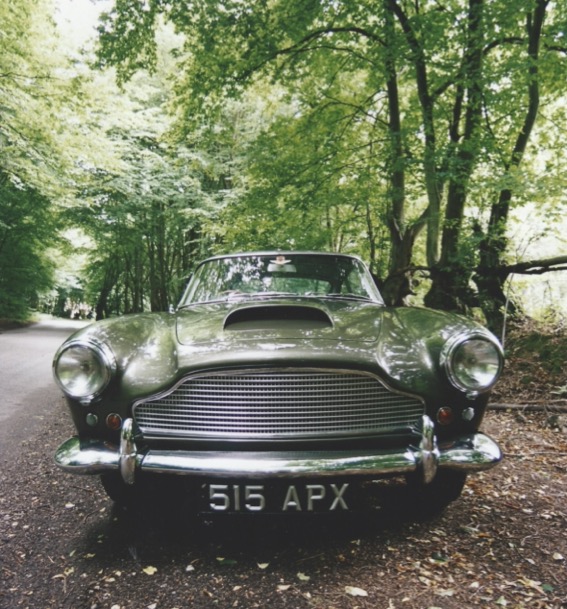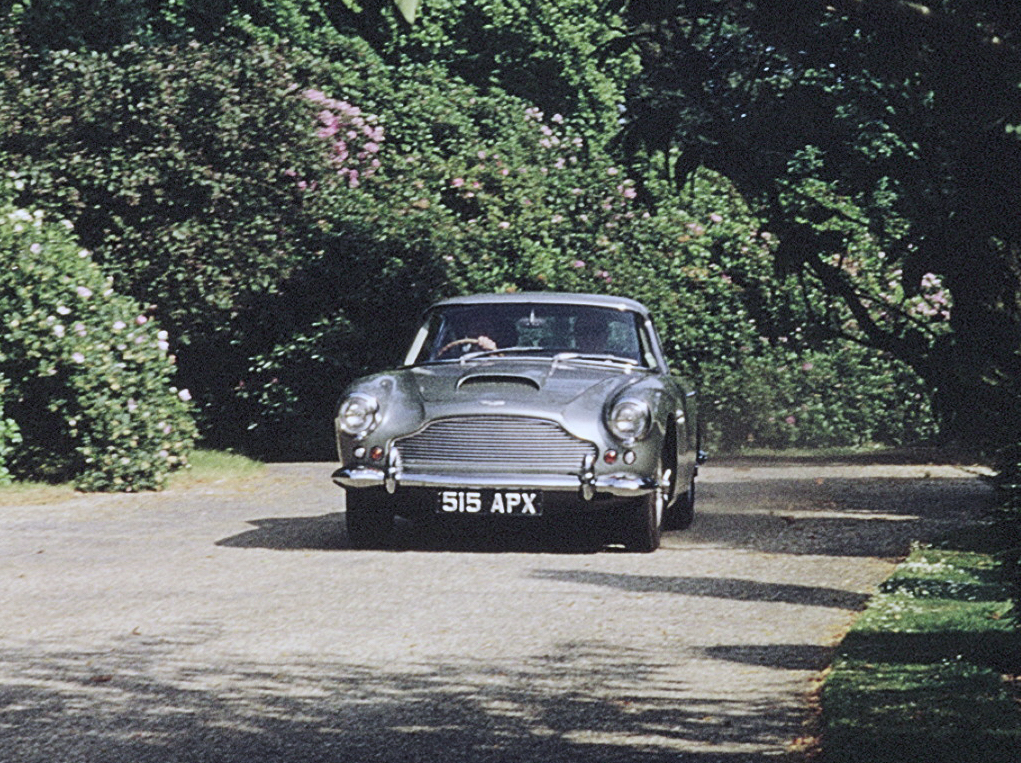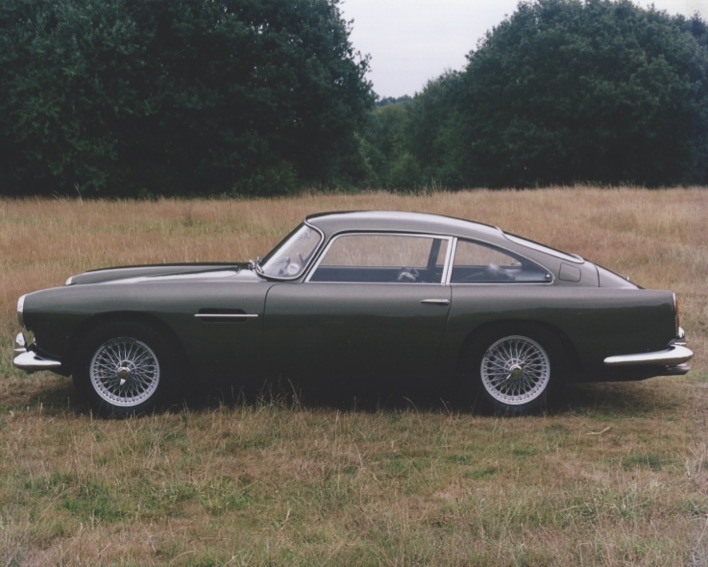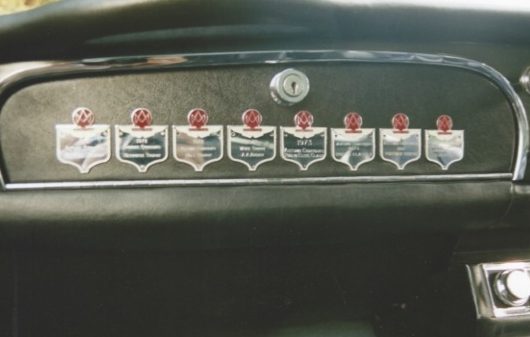“My school friend Tony loved coming round to our house and seeing my father’s DB4 in the 1970s but I’d forgotten just how much he loved that car until I sold it to him. I don’t talk about the sale often because if I’m honest there’s something a little sad about parting with a car that you’ve spent a considerable amount of time with, but the good news is that Tony is the perfect custodian. My father was a philosophical type and he knew that it had gone to a good home too.
Back in the day, June 1970 to be precise, my father bought the 1961 DB4 for frequent use – it was £875, he beat the seller down from £895. He drove it to work in London and every other summer he took it to a UN conference in Geneva so my mother, brother and myself would fly over to meet him for a family holiday. We drove all over Europe, it was a real grand tourer being used for what it was meant to be used for, and even as a young lad I appreciated those trips.

I remember going across the spectacular Splügen Pass in the Swiss Alps; driving down to Split on the Adriatic coast in Croatia (which was then Yugoslavia) and in Italy going through a series of unlit converted railway tunnels that connected the group of towns called the Cinque Terre on the Italian Riviera. By today’s standards driving great distances with a four-speed transmission feels a bit busy, but in the seventies you just got on with it because the DB4 was considered a performance car – it could do 70mph at 3000RPM all day long.

To fit a family of four in a DB4 my parents must have had some sort of packing system, but compared to holidaying in my mother’s 850cc Mini – with the dog as well, and no roof rack – it must have been a piece of cake. My brother was 5ft 9in at the time and I was a bit smaller, but we squeezed into the back. Eating wasn’t allowed in the car but there was always a supply of pear shaped boiled sweets that were kept in a little tin for longer journeys. We might have a picnic next to the car, but not in it – unless the weather got really bad.
My dad thought the DB4 was as good as an Aston could get and I think he appreciated how special it was it before other people did. When it came out in ’58 it was a sensation because there was nothing else like it on the road – a 1958 Ferrari was mediocre, it was three years before the E-Type and Porsches were basically still upturned buckets – and even though it wasn’t the status symbol that it is today, the Aston elicited admiration rather than envy. We won many concours with it, working on it and preparing it was simply an enjoyable family pastime.
Over the years other cars came and went, there was a DB6 Volante and a DB5, but father kept the DB4. In the nineties, after more than thirty years of ownership, he gave it to myself and my brother to keep, look after and enjoy.


I’d driven it a fair bit so it wasn’t a sudden transition from passenger seat to drivers’ seat and although it wasn’t quite as polished compared to some modern cars I appreciated it for what it was; the character of a car is defined by its idiosyncrasies and flaws. By 2004 neither of us had the time to use it enough, I was running a business and getting into racing Porsches as well as having a busy family life and my brother was busy doing many things. I could have bought him out but something inside me said it would be wrong for me to have all the pleasure of the car to myself – so we decided to sell it.
I’ve owned 90 cars, including all the daily tin boxes such as a Fiat Uno (rubbish) and seven Volvo XC90s, and have been trying to trace down where the most significant ones ended up. What’s nice about the DB4 is that even though I regretted selling that the most, I know where it is – with my very dear school friend Tony. I’ve known him since 1973 and he’s known and loved the DB4 all that time too. Father passed away in 2009, so was alive when the car went to Tony, and he was happy about it. The plaques and plates we collected from events are still on the dashboard and most of them have his name on, so in a way he lives on in that DB4.
Tony has kept it beautifully; it’s still very much an unrestored car because he’s not tampered with it or messed with it. It’s done 105,000 miles and it’s always been well looked after and carefully driven, it’s incredible, perhaps even exceptional, that the gearbox and back axle have never been touched. Tony has every scrap of paper, invoice and receipt for it since day one – my father bought it from its first owner – and the remarkable thing is that the last time the engine was apart was in 1967, and it’s fine.

Tony and I are great pals and even though I know he’s not asking if his plans for the DB4 are all right with me, I think there’s this sense that he hopes I will approve – which I always, absolutely do. He definitely feels a responsibility for the car, but I’ve never ever given him advice because I know he will do the right thing. We both know that cars like that are not so much about owning as taking the responsibility to be the custodian.
When I visit the DB4 it’s like being reacquainted with an old friend, it’s just lovely. Occasionally, when I get to drive it, I think to myself, don’t miss a gear or do something daft. The brakes are much better than they used to be! The seats are still lovely and sumptuous, but it’s the smell of the Connolly Vaumol leather that has a far greater emotional trigger effect than anything else because it brings back all the lovely memories. Relationships with such cars run deep.
Any regret about the DB4 is tempered by the fact that Tony has got it, plus, I couldn’t afford to buy it back now because it’s worth too much money! You can’t take the history out of a car, so it will always be an Archer car.”
Read more
The One That Got Away: John Illsley of Dire Straits and the Aston DB5 bought with his first royalty cheques
Mighty Minky: After 30 years the Aston Martin Virage 6.3 is still the real deal
Lunaz DB6 electrifies Aston’s classic GT










What a lovely story !